Boy, talk about a close call. Remember how, a couple of posts ago, I mentioned finishing culinary school? My last required course was on wedding cakes, and my mixer at home really got a workout while that class was going on. Picture multiple cake layers of all sizes, and back-breaking batches of buttercream. I was baking like a demon well into March. As usual, I counted on my trusty KitchenAid 6-quart to help me get the job done. Gosh, I loved that mixer. I was always waxing rhapsodic about it. I bought it around the time I started this blog, so it's appeared here in countless photos over the years. I remember when I took it out of the box and beheld it for the first time, I felt like the proud owner of a Formula 1 race car. Couldn't wait to drive it. I knew it was the start of something big.
Then it seized up. The timing alone was a little eerie, I have to say.
Not believing that it could actually be dead, I tenderly tucked it into my minivan and chauffeured it miles across town to a special repair shop to get it checked out. I wasn't overly worried. My perception had always been that KitchenAid mixers simply didn't die young. They just didn't do that. They were too good for that . . . weren't they? I accepted that it might be pricey to fix, but the expense would be worth it. After all, this mixer and I had had countless good times together. We were BFFs. Like Lucy and Ethel. Like Thelma and Louise. Heck, we were a baking marriage made in heaven.
So when I got The Call a couple of days later informing me that it "wasn't worth fixing" I was stunned. Choking back a tiny sob, I listened as the repairman rattled off a list of my mixer's troubles. He postulated that a freak internal break of some kind had occurred weeks or even months before, causing ball bearings and whatnot to fall into the gearbox, where they'd been tossing about like jumping beans ever since, stripping the gears to kingdom come.
He marveled at the mechanical carnage. It was a situation entirely without hope. He paused for a moment and then added, not unkindly, "I don't charge for what I can't fix, so there's no charge for this."
The fresh model (pictured in the background above) arrived in less than a week and I'm happy to report that we're getting along like a house on fire. Gloriously shiny, in candy-apple red, it's remarkably quiet compared to even a properly functioning KitchenAid 6-quart. Its larger bowl makes it easier to deal with hefty quantities of dough and, best of all, it has a more powerful motor. I am optimistic it will live far longer than its unlucky dead-at-four-years-old predecessor. It had better live longer, in any case, or I'll have to rethink my long-time love affair with KitchenAid, and that, my friends, is a scenario I shudder to contemplate.
And so, in celebration of my old mixer's life and the new mixer's entrance into my kitchen, I present to you a very fine bread, enhanced by the inclusion of unpeeled, tender-skinned, Yukon Gold baby potatoes.
This formula produces two large and impressive loaves. It's adapted from The Bread Book: A Baker's Almanac, by Ellen Foscue Johnson. I significantly reduced the amount of fat and sugar in her formula (halving both), and the bread still turned out richer than I expected. What else did I change? Well, the original recipe did not specify Yukon Golds, but I love them. Also, I used instant yeast instead of active dry, used bread flour instead of all-purpose, I halved the amount of eggs (used only one), and I used a little whole wheat flour and a dab of wheat germ. And, as usual, I rewrote the instructions to reflect exactly what I did. This soft bread has nice flavor and a beautiful texture. It doesn't dry out quickly at all, but when it starts to do so I encourage you to use it for toast--it's fantastic toasted.
Yukon Gold Potato Bread
(For a printable version of this recipe, click here!)
Yield: 2 large loaves
1 cup milk (I used 2%)
1 cup warm well-mashed Yukon Gold baby-size potatoes, unpeeled
1 scant cup warm water
1/4 cup honey
1/4 cup unsalted butter
1 large egg, lightly beaten
6 to 7 cups unbleached bread flour (about 2 lbs.)
1 and 1/4 tablespoon instant yeast (or use 1 and 1/2 tablespoon active dry, but proof it first)
2 teaspoons salt (I used coarse kosher)
1 and 1/2 tablespoons toasted wheat germ
1/3 cup whole wheat flour
1 pinch ground ginger
About 2 teaspoons softened butter to brush on baked loaves
In a large saucepan heat the milk, mashed potatoes, warm water, and honey, stirring with a whisk. Add in the butter, and cook until the butter is melted. Take the pan off the stove and let it cool to just lukewarm, then whisk in the beaten egg.
Place 3 cups of the flour, the yeast, salt, wheat germ, wheat flour, and ginger in the large bowl of your mixer. Using the paddle attachment on lowest speed, mix together to combine. Pour all of the wet ingredient mixture into the bowl. Mix on low speed for two minutes, gradually adding in more flour until you've used 6 of the 7 total cups. If the dough is extremely soft and wet, add in most of the remaining cup of flour.
Switch to the dough-hook attachment and mix on the lowest speed for about 4 minutes, until the dough is smooth and elastic. Or, dump the dough out of the bowl onto a well-floured work surface, flour your hands, and do all of the kneading by hand. (I did the first minute or two in my mixer, then dumped it out and finished kneading by hand. I almost always do some variation of this because I just get a better feel for what's going on with the dough by touching it, and I'm less likely to over-knead a dough this way.)
Put the dough into a large bowl that's been oiled or sprayed with vegetable spray. Cover the top of the bowl with a piece of plastic wrap that's also been oiled/sprayed, and cover that with a lightweight dish towel.
Let the dough rise at room temperature for about an hour, or until doubled in bulk. (Mine rose very high. Check out that photo below!)
Dump the risen dough out onto a lightly floured surface, and deflate it by pressing on it. Divide the dough evenly into two pieces. Round each piece, using both hands, by gently tugging downward in a circle; you want to create surface tension. Put the rounded pieces back on your work surface, cover them with the greased plastic wrap, and let them rest for about 12 minutes.
Grease two standard size loaf pans.
Shape each piece of dough into a loaf, being careful to tuck in the ends and tightly pinch closed all seams. (If you need help shaping your dough, check out this helpful post at Farmgirl Fare, it's a good reference if you're fairly new to the bread process.) Place the dough into the greased pans, cover them loosely with the greased plastic wrap and a lightweight dish towel.
Preheat your oven to 375 degrees. Let the loaves proof (have their final rise) in a spot that's at least room temperature until the middle of the dough has risen at least 1-inch above the edge of the pan (probably half an hour to an hour). Gently remove the plastic wrap. Spritz the tops of the loaves thoroughly with water (I use a plant mister to do this, but if you don't have one you can always wet your hands and pat the water right onto the loaves if you do it gently) right before you're ready to place them in the hot oven. Quickly spritz a few squirts of water directly into the oven (but away from the lightbulb). The use of water will help keep the loaves from "bursting" when they start their dramatic rise.
Bake on the middle rack for around 35 minutes total, but check the loaves at about 20-25 minutes to see if they're browning too quickly; if they are, cover them lightly with a sheet of foil. The loaves are done when their outsides are deeply golden all over, and their insides have reached 200 degrees (stick an instant-read thermometer in their bottoms to check if you're not sure; I almost always do this with larger loaves). Remove the fully baked loaves from their pans immediately, brush the top of each loaf with a teaspoon of the softened butter, and let them cool on a rack before slicing.
(If you'd like to comment on this post, or to read any existing comments, please click on the purple COMMENTS below.)
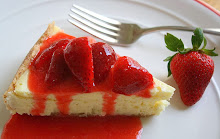



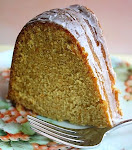
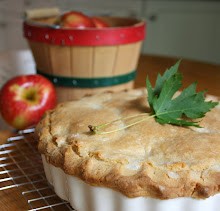






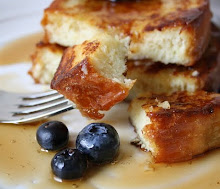

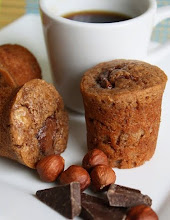






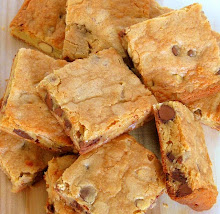
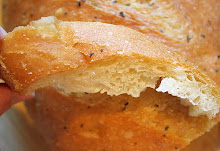
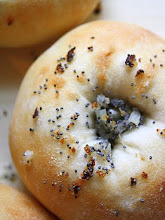
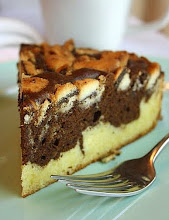
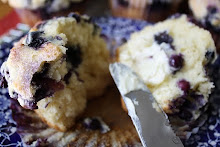

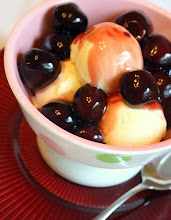




10 comments:
I am eyeing for the 7Qt for a long time..still waiting.. *sigh*
Your potato bread looks amazing! I'm into bread making now..so this post came at the right time for me. I'm so going to make this! Looks so pillowy soft..just the way i like it! :D
Hi Jane,
Sorry to hear about your old mixer! Congratulations on your new one! I cannot imagine if that happens to mine! I'll probably cry until I get a new one! LOL!
My Kenwood mixer has been with me for close to 8 years now, cannot imagine my kitchen without it!
Your bread looks fantastic! The texture looks so soft and delicious. Potato bread is one that I have not tried making before. Thanks for sharing another perfectly baked bread!
Wishing you a great weekend ahead!
Beatiful and yummy!
Congrats on the new mixer Jane! I'm surprised the other one gave up but actually if it was in poor shape for all those months I guess it was time to go NEW!!!
I love potato bread but as you know, I have a bad case of yeastaphobia. I sure would love to give it a go one day though.
Thank you so much for sharing and I'm sure we will be getting lots of goodies now that you have a new mixer!
P.S. I've been meaning to drop by to tell you I have rejoined the blogging world. You can read about my decision here when you get a minute.
Hi Jane,
Hope all is well with you and yours. Louise
This is a perfect Mixer for baking and the bread we bake has a perfect texture and so yummy. Thanks for sharing this post and I love it!
xoxo
Jogara
cakes bakery in Brooklyn
hahaha ,,,
good luck with your new mixer ...
I adore how you compared your mixer to a racecar. I think that is an accurate description of mixers used for culinary students. Congrats on finally finishing with school. Your pictures are making my mouth water. Thank you for adding the recipe.
http://online-phd-uk.co.uk/
Thinking of you Jane. Hope all is well:)
hi,
This is the first time I am trying to make my own bread and I'm glad that I have found this great web-site.
Do you mind telling me which bread should I try since it is my first time and I do not have a bread making machine. I may buy one when my first bread is successful :)
Post a Comment